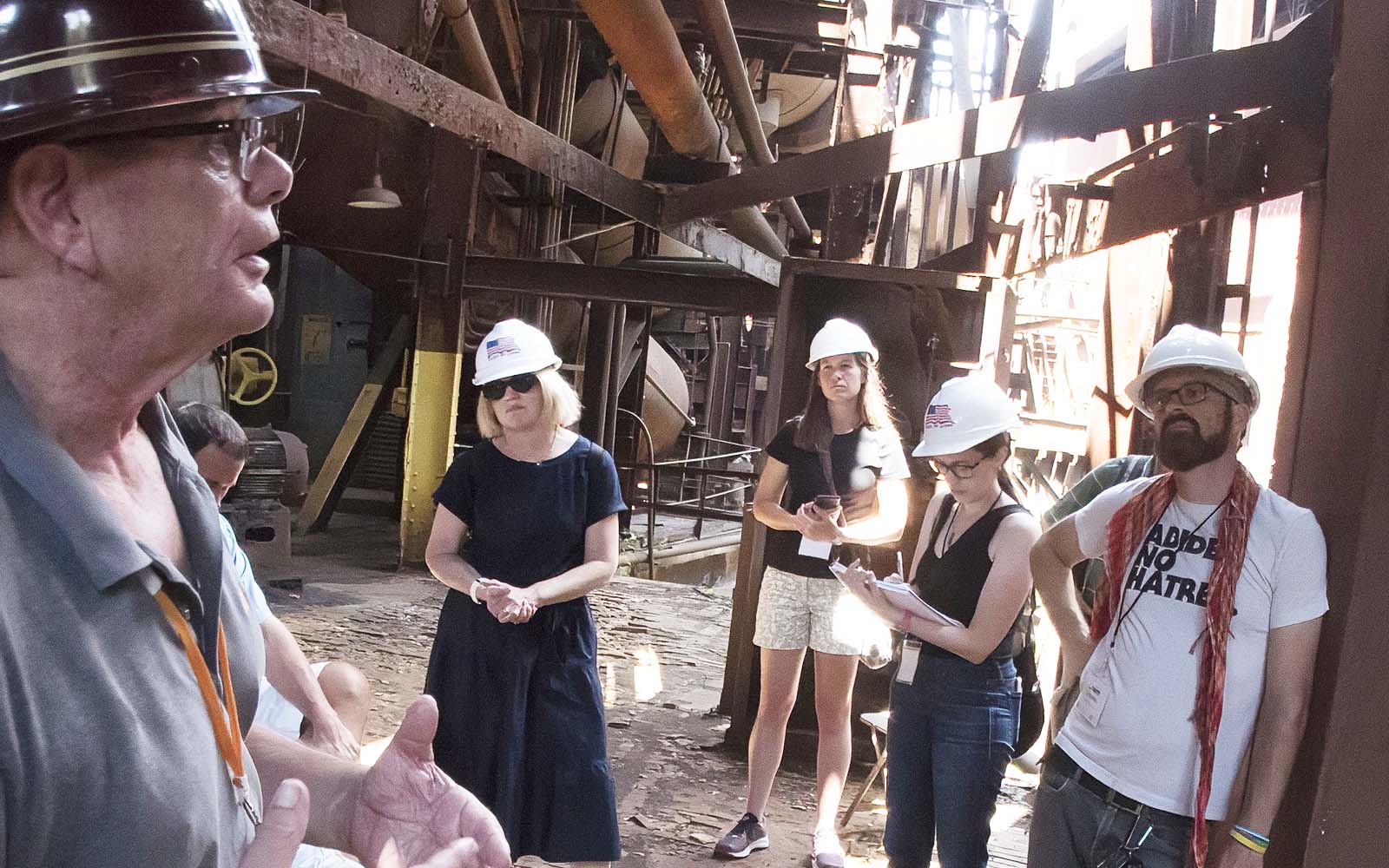
A Landmarks of American History and Culture Workshop
As we reflect back on the accomplishments of 2022, one of this year’s highlights was a collaboration with the Archives & Special Collections Department at the University of Pittsburgh Library System to present a Landmarks of American History and Culture workshop, sponsored by the National Endowment for the Humanities (NEH).
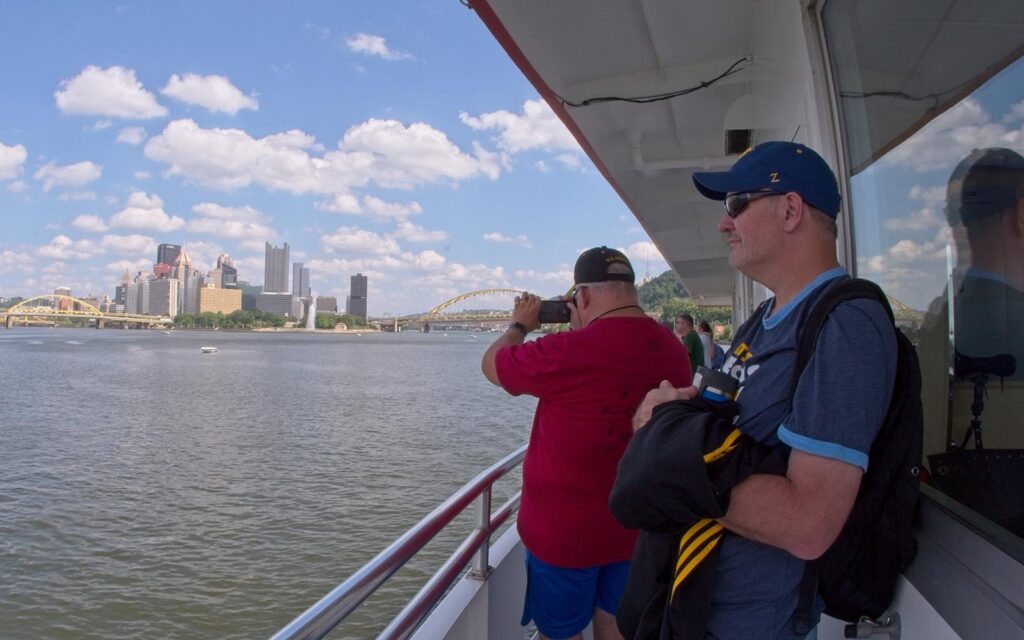
Workshop participants traveled upriver, following the route taken by the Pinkerton force in 1892.
Entitled The Homestead Steel Strike and the Growth of America as an Industrial Power, the program hosted sixty-seven teachers from across the United States for a weeklong immersive experience.
Divided into two cohorts over two weeks in July, the educators explored the circumstances that led to the 1892 Battle of Homestead and its lasting impact on the United States.
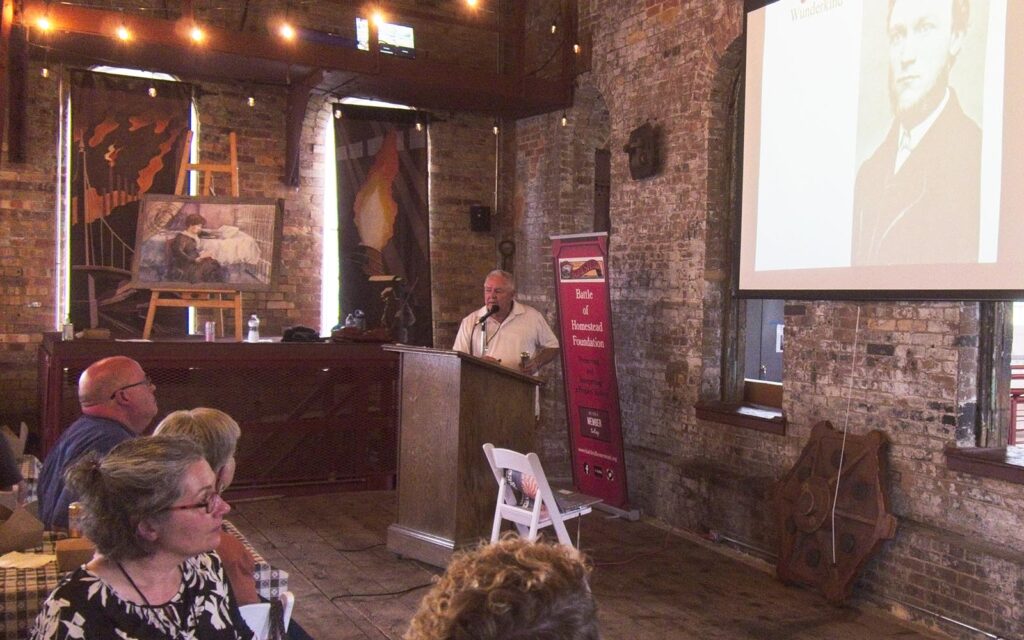
Les Standiford addresses the group at the Pump House.
Their first visit? The Pump House, once part of the former Homestead Steel Works and the site of the actual Battle of 1892. During an evening reception, the group had an opportunity to meet with one another and greet many of the speakers who would be giving sessions later in the week.
Even for this first meeting, the participants were prepared to surpass small talk. They were tasked with reading in advance three books that would provide context for the week: Paul Krause’s The Battle for Homestead, Thomas Bell’s novel Out of This Furnace, and Les Standiford’s Meet You in Hell.
Each day, teachers attended a morning lecture series that featured local and national industrial history, immigration, and labor experts, including: author and professor Dr. Charles McCollester, filmmaker and labor educator Steffi Domike, author and historian Edward (Ted) K. Muller, historian Tammy Hepps, interdisciplinary educator Joel Woller, author and steelworker Ken Kobus, author and professor Quentin Skrabec, author and historian Paul Kahan, and author Les Standiford. You can check out their bios here.
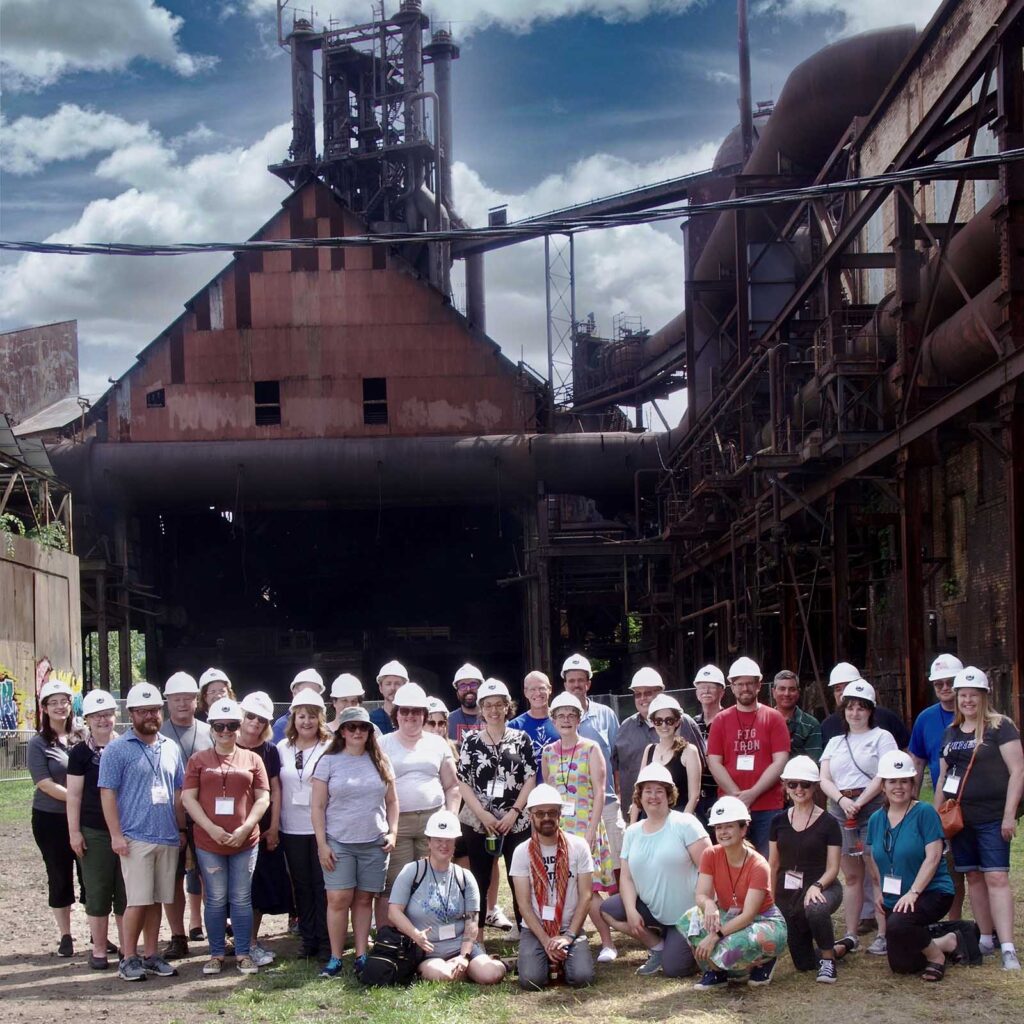
The group at the Carrie Blast Furnaces.
Afternoons were spent visiting various attractions in southwestern Pennsylvania that relate to labor history, immigration, and steelmaking. Field trips included a tour of Clayton at The Frick Pittsburgh, the Pittsburgh home of Henry Clay Frick; a tour of the Bost Building, a site that received National Historic Landmark status for its role as the strikers’ headquarters during the Battle of Homestead; a narrated river tour of the former industrial sites on the Monongahela River on the Explorer riverboat; a stop at the Carnegie Library of Homestead; an Industrial Tour of the Carrie Blast Furnaces; and a visit to the Born of Fire exhibit at the Westmoreland Museum of American Art, which was interpreted by the museum’s former curator, Barbara Jones.
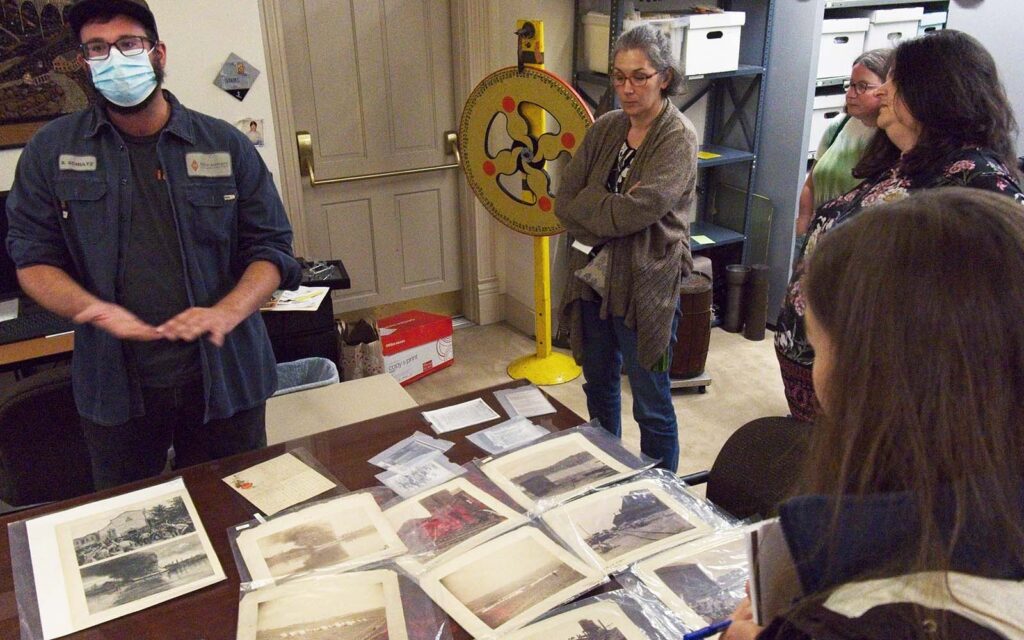
Interpretive specialist Ryan Henderson shows part of the group items from Rivers of Steel’s archives during the visit to the Bost Building.
Beyond lectures and site visits, the educators also had the opportunity to view and photograph primary source materials related to the strike in the University of Pittsburgh and Rivers of Steel archives. Highlights from the Archives & Special Collections Department at the University of Pittsburgh Library System included the Allegheny County Coroner’s inquest reports on the fatalities at the Battle of Homestead and the papers of William Martin, who served as Carnegie Steel’s Chief of the Bureau of Labor during the period of the strike. Rivers of Steel displayed the Daily Record of Allegheny County Prison featuring Alexander Berkman’s name in the arrest records and letters from a Pinkerton guardsman.
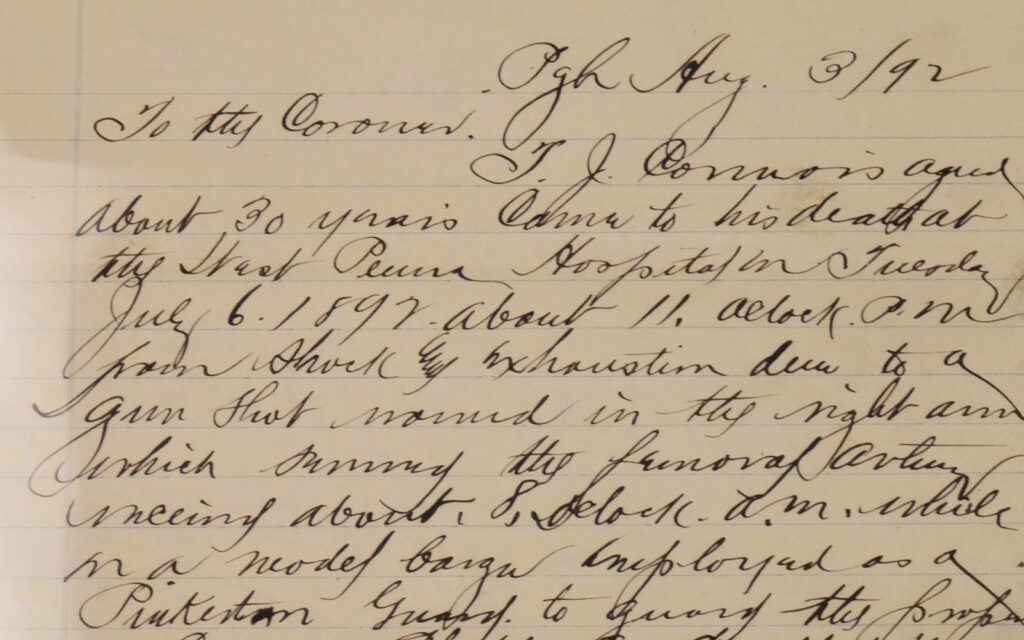
A 1892 letter to the coroner detailing the events around the death of one of the laborers.
While the workshop focused on America’s well-known industrialists, Andrew Carnegie and Henry Clay Frick, teachers also delved into information on the immigrant experience and additional content on iron- and steelmaking to set the context for the events of 1892.
The end result of this unique experience? Participating teachers developed lesson plans based on themes from the workshop, most of which can be found here: The Homestead Steel Strike and the Growth of America as an Industrial Power (pitt.edu)
Initially, this workshop was to be offered in 2020, but it was postponed twice due to the pandemic. It was worth the wait. Given the response by participants and collaborators, Rivers of Steel and our partners at the Archives & Special Collections Department at the University of Pittsburgh Library System plan to apply for another NEH grant to offer this workshop again in the near future.
To view and search the resources on the 1892 Homestead Steel Strike in the University of Pittsburgh Digital Collection, click here: https://pitt.libguides.com/homestead.
To view and search the Rivers of Steel Archival Collection, click here: https://riversofsteel.pastperfectonline.com/.
Interested in reading about other Rivers of Steel education programs? Check out this story featuring Community Collaborations in 2022.







